Maximizing Small Living Areas with Strategic Storage Solutions
Living in compact spaces has become increasingly common in urban areas, making space-saving furniture essential for modern homes. Whether you're dwelling in a cozy studio apartment or managing a small bedroom, the choice between corner units and traditional shelving can significantly impact your living space. Understanding how to optimize every square foot while maintaining functionality and style is crucial for creating a comfortable living environment.
The challenge of organizing belongings in limited space requires thoughtful consideration of furniture choices. Both corner units and shelving systems offer unique advantages, and selecting the right option depends on various factors including room layout, storage needs, and aesthetic preferences. Let's explore these storage solutions in detail to help you make an informed decision for your space.
Understanding Corner Units: The Hidden Champions of Space Efficiency
Design Features and Space Optimization
Corner units are specifically engineered to utilize often-neglected corner spaces in rooms. These pieces of space-saving furniture transform awkward angles into functional storage areas. The triangular or L-shaped design follows the natural contours of room corners, creating storage solutions that seem to disappear into the architecture. Modern corner units often feature rotating shelves, pull-out mechanisms, or multi-tiered arrangements that maximize vertical space while minimizing the footprint.
The innovative design of corner units often incorporates features like adjustable shelving, built-in lighting, and modular components that can be customized to specific storage needs. This adaptability makes them particularly valuable in spaces where every inch counts.
Benefits of Corner Unit Implementation
Corner units excel at utilizing dead space that would otherwise remain empty. They create storage opportunities in areas where traditional furniture pieces wouldn't fit, effectively increasing the room's usable space. The strategic placement of corner units can help maintain clear pathways and open floor areas, contributing to a more spacious feel in tight quarters.
These units often provide surprising amounts of storage capacity despite their space-efficient design. Their vertical orientation allows for substantial storage volume while maintaining a relatively small horizontal footprint. This makes them ideal for storing everything from books and decorative items to clothing and household essentials.
Traditional Shelving Systems: Versatility and Accessibility
Flexible Configuration Options
Traditional shelving systems offer remarkable versatility in terms of arrangement and installation. As a fundamental piece of space-saving furniture, shelving can be mounted at various heights, spread across walls, or configured in multiple arrangements to suit specific needs. The ability to adjust shelf spacing and add or remove components makes these systems highly adaptable to changing storage requirements.
Modern shelving solutions come in numerous styles and materials, from minimalist floating shelves to industrial-style bracket systems. This variety allows homeowners to select options that complement their décor while maximizing storage efficiency.
Storage Capacity and Accessibility
One of the primary advantages of traditional shelving is its straightforward accessibility. Items stored on open shelves are easily visible and reachable, making them ideal for frequently used items. The linear arrangement of shelving systems allows for efficient organization and quick retrieval of stored items.
Shelving systems can span entire walls, creating substantial storage volume while maintaining a sleek profile. This vertical storage approach helps keep floor space clear while providing ample room for books, decorative items, and everyday essentials.

Comparative Analysis: Making the Right Choice
Space Utilization Metrics
When comparing corner units and traditional shelving, it's essential to consider the total storage volume relative to floor space occupied. Corner units typically offer superior space efficiency in terms of storage capacity per square foot of floor space used. However, traditional shelving systems often provide more flexible storage options and can be installed in various configurations to maximize wall space.
The choice between these space-saving furniture options often depends on room geometry and specific storage needs. Corner units excel in rooms with multiple corners or awkward angles, while traditional shelving might be more suitable for rooms with long, uninterrupted wall spaces.
Practical Considerations and Installation
Installation requirements and complexity differ significantly between corner units and shelving systems. Traditional shelving typically requires simpler installation processes and can be more easily modified or relocated. Corner units, while potentially more complex to install, often provide more integrated storage solutions that can be customized to specific spaces.
Cost considerations also play a role in the decision-making process. While custom corner units might require a higher initial investment, their efficient use of space can provide greater long-term value in very small rooms. Traditional shelving systems often offer more budget-friendly options and greater flexibility for future modifications.

Frequently Asked Questions
How do I determine whether a corner unit or shelving system is better for my room?
Consider your room's layout, available wall space, and corner configurations. Measure your space carefully and assess your storage needs. Corner units are ideal for rooms with unused corners and limited floor space, while shelving systems work well in rooms with ample wall space and need for flexible storage arrangements.
Can I combine corner units with traditional shelving?
Yes, many homeowners successfully combine both storage solutions to maximize space efficiency. This hybrid approach allows you to utilize corners effectively while maintaining the flexibility of traditional shelving along walls, creating a comprehensive storage system that addresses various needs.
What are the maintenance requirements for corner units versus shelving?
Traditional shelving typically requires minimal maintenance beyond regular dusting and occasional tightening of brackets or supports. Corner units, especially those with moving parts or complex mechanisms, may require more attention to maintain smooth operation. Both options can be equally durable with proper care and quality materials.


